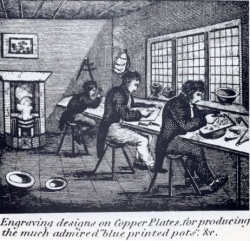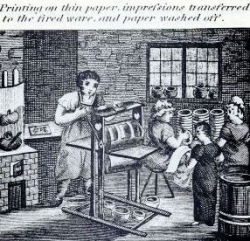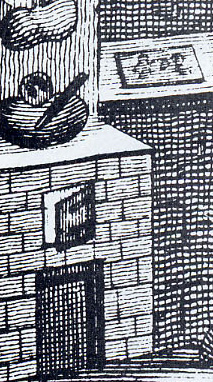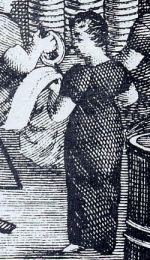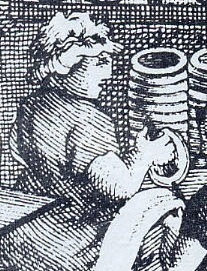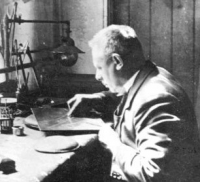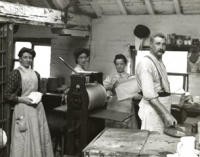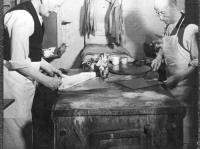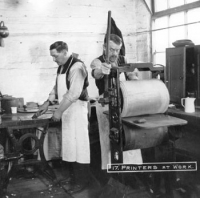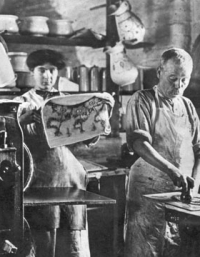The engraving is executed upon copperplates, and for ‘press’ printing is cut very deep, to enable it to hold a sufficiency of colour to give a firm and full transfer on the ware. The printer’s shop is furnished with a brisk stove, having an iron plate upon the top, immediately over the fire, for the convenience of warming the colour while being worked, also a roller, press and tubs. The printer has two female assistants called ‘transferrers’ and also a girl called a ‘cutter.' The copper plate is charged with colour, mixed with a thick boiled oil, by means of a knife and a ‘dabber,’ while held on the hot stove, for the purpose of keeping the colour fluid; and the engraved portion being filled, the superfluous is scraped off the copper with the knife, which is further cleaned by being rubbed with a ‘boss,’ made of leather. A thick firm oil is required to keep the different parts of the design from flowing into a mass, or becoming confused, while under the pressure of the rubber in the process of transferring. A sheet of paper, of the necessary size and of a peculiarly thin texture, called ‘pottery tissue,’ after being saturated with a thin solution of soap and water, is placed upon the copper plate, and being put under the action of the press, the paper is carefully drawn off attain (the engraving being placed upon the stove), bringing with it the colour by which the plate was charged, constituting the pattern. This impression is given to the ‘cutter;’ who cuts away the superfluous paper about it; and if the pattern consists of a border and a centre, the border is separated from the centre as being more convenient to fit to the ware when divided. It is then laid by a transferrer upon the ware, and rubbed with a small piece of soaped flannel to fix it, and afterwards with a rubber formed of rolled flannel. This rubber is applied to the impression very forcibly, the friction causing the colour to adhere firmly to the bisque surface, by which it is partially imbibed; it is then immersed in a tub of water, and the paper washed entirely away with a sponge; the colour, from its adhesion to the ware, and being mixed with oil, remains unaffected. It is now necessary, prior to ‘glazing,’ to get rid of this oil, which is done by submitting the ware to heat in what are called ‘hardening’ kiln, sufficient to destroy it and leave the colour pure. This is a necessary process, as the glaze, being mixed with water, would be rejected by the print, while the oil remained in the colour. |

